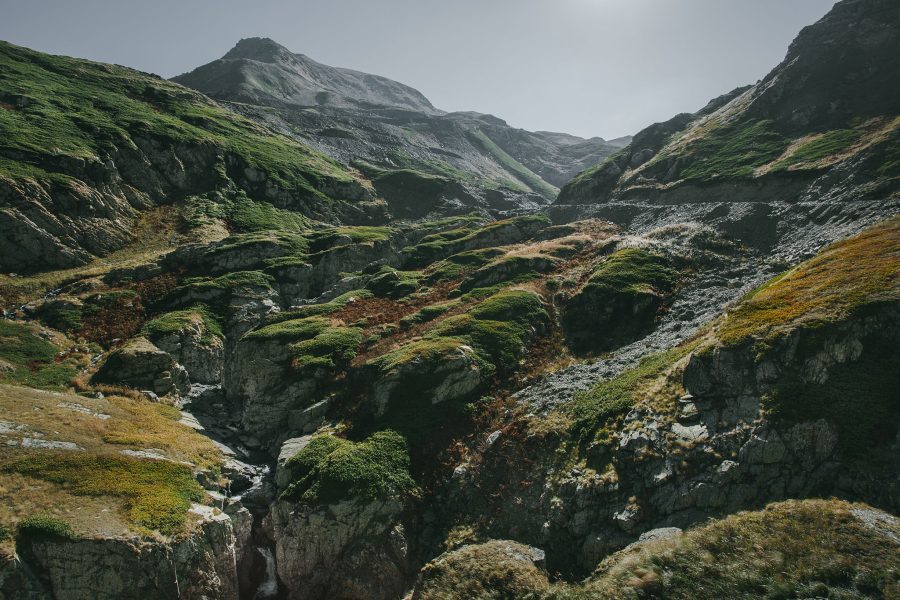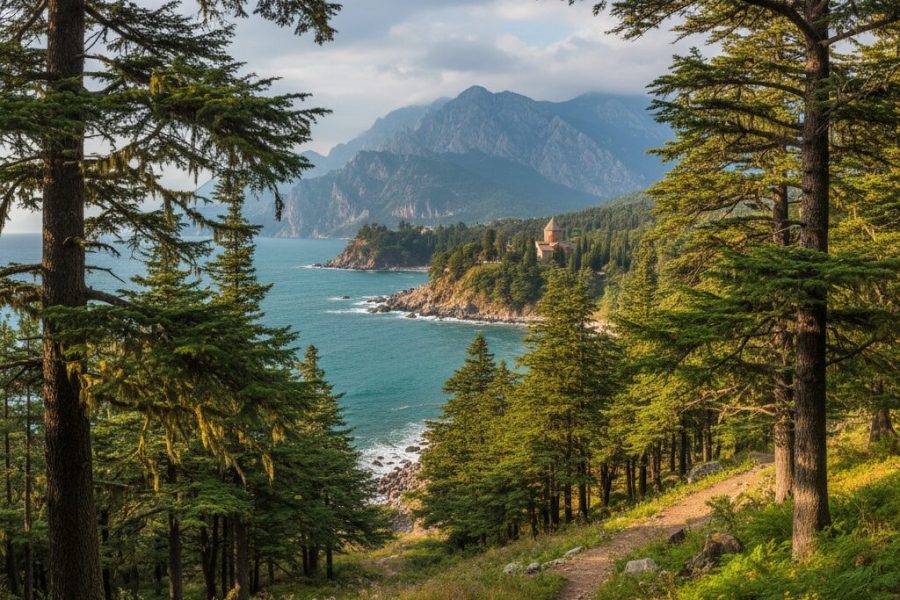The Larovaniskhevi River: A Wild River of Tusheti
The Larovaniskhevi River (მდინარე ლაროვანისხევი) is a high-altitude river in the Akhmeta Municipality, flowing through the remote and wild region of Tusheti in northeastern Georgia. It is a left tributary of the Tushetis Alazani River, originating on the southern slopes of the Makratela Range. The river carves a deep and inaccessible valley through the heart of the Tusheti National Park, a landscape of pristine beauty, dramatic peaks, and exceptionally well-preserved ecosystems. The Larovaniskhevi is a river for true wilderness lovers, known only to local shepherds and the most adventurous trekkers.
The river flows through a completely uninhabited valley, one of the wildest corners of Tusheti. Its landscape is one of alpine meadows, steep rocky slopes, and the ever-present backdrop of the High Caucasus. For those exploring the remote trekking routes of Tusheti, the Larovaniskhevi valley represents the region at its most untouched and spectacular.
ℹ️ General Information
- Name of River: Larovaniskhevi River (მდინარე ლაროვანისხევი)
- Location: Akhmeta Municipality, Tusheti, Georgia.
- Length: 16 km (10 miles)
- Basin Size: 59 km² (23 sq mi)
- Source (Origin): Southern slope of the Makratela Range.
- Mouth (Where it flows): Left tributary of the Tushetis Alazani River.
- Main Tributaries: Small mountain streams.
📍 Geography & Course
The Larovaniskhevi is a powerful mountain torrent. It begins in the alpine zone and descends rapidly through a deep, V-shaped gorge. Its water is cold and clear, fed by snowmelt and seasonal rains. The terrain is extremely rugged, with no roads or established infrastructure.
🌿 Nature & Ecology
The river flows entirely within the Tusheti National Park, a biodiversity hotspot. The valley’s ecosystem includes subalpine forests giving way to vast alpine meadows, which are critical habitats for the endemic East Caucasian tur and chamois. The area is also home to brown bears, wolves, and large birds of prey. The river and its valley are a perfect example of a pristine Caucasus mountain ecosystem.
🏛️ History & Culture
Due to its remoteness, the Larovaniskhevi valley has no permanent settlements or historical monuments. Its human history is that of the Tush shepherds who have used its high meadows as summer pastures for their flocks for centuries. It is part of the traditional lands of the Tush people, whose unique culture is deeply intertwined with their harsh mountain environment.
🚣 Activities & Tourism
The valley is a destination for the most serious and self-sufficient adventurers.
- Wilderness Trekking: The area is part of remote, multi-day trekking routes that connect different valleys within Tusheti.
- Wildlife Observation: For patient and experienced observers, the valley offers a chance to see some of the Caucasus’s rarest wildlife.
This is not a destination for casual hiking. It requires expert navigation and wilderness survival skills.
🛤️ Accessibility
The Larovaniskhevi valley is completely inaccessible by vehicle. It can only be reached via long and strenuous multi-day treks from villages like Omalo or Dartlo. Access to the entire Tusheti region is itself very difficult, limited to a short summer season via the dangerous Abano Pass, and requires a 4×4 vehicle.




Leave a review